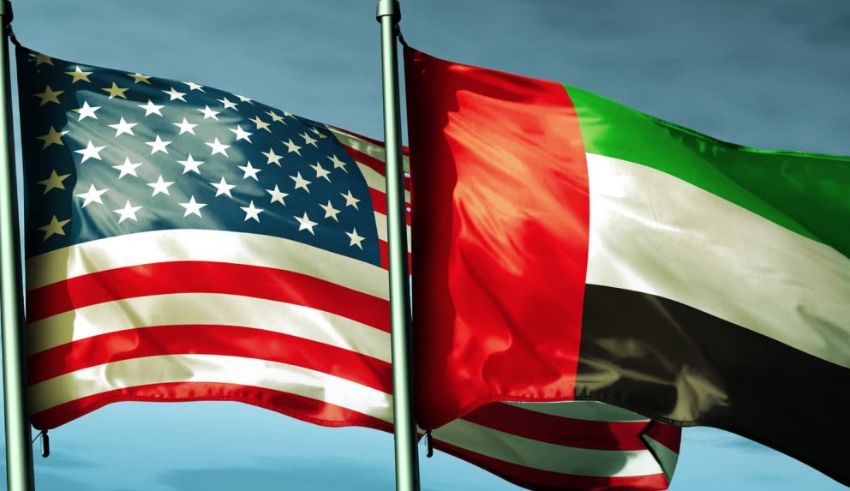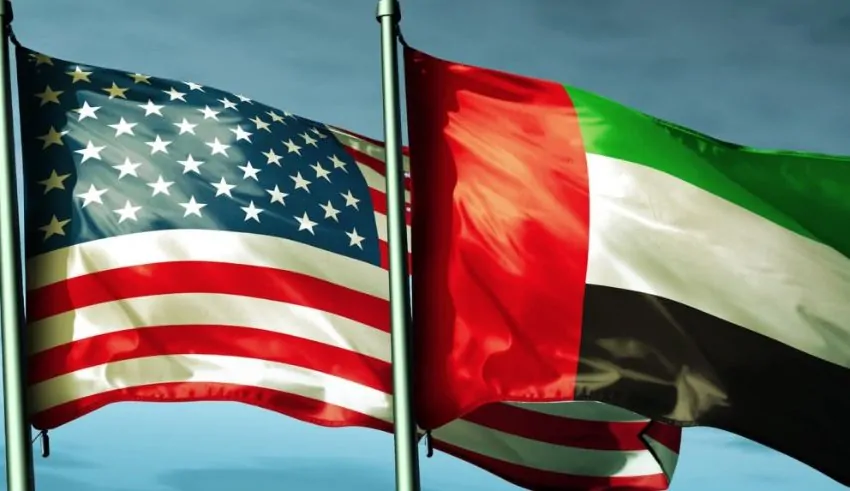

(C) UAE Embassy
The United Arab Emirates (UAE) and the United States have developed a strong and multifarious alliance in space exploration over the past ten years, hence driving both countries to lead worldwide space races. Beginning with scientific interactions, this cooperation has developed into a strong alliance spanning modern technological innovation, cooperative space missions, and political agreements aiming at determining the direction of space exploration for all mankind.
Starting in 2016 with an agreement between NASA and the UAE Space Agency to cooperate on aeronautics research and peaceful use of outer space, the cooperation This deal highlighted UAE’s rising space industry aspirations and set the foundation for next cooperative projects. Working together, the two countries have been able to hasten their own objectives in space exploration, boosting research, technology, and international collaboration in an area with great future possibilities for next generations.
By joining founder members of the Artemis Accords, the UAE and the US made a major advance step in 2020. Setting out ideas like openness, peaceful objectives, and respect of international law, these accords created a foundation for responsible space exploration and diplomacy. Not only for the UAE’s increasing sway in world space affairs but also for the larger worldwide endeavor to guarantee that space exploration serves all of mankind. This was a significant turning point. By participating in the Artemis Accords, the UAE signaled its increasing influence as a major factor determining the direction of space exploration
The UAE’s growing cooperation with NASA peaked this year when it announced that it would build the airlock module for NASA’s Lunar Gateway. The first outpost of humanity in lunar orbit, this lunar space station will act as a staging ground for trips to the Moon and beyond. Emphasizing the value of this cooperation, US Vice President Kamala Harris—who also chairs the US National Space Council—said that the US and UAE’s space exploration partnership lets both countries pool their scientific resources, technical knowledge, and expertise, so advancing their shared vision for space and generating opportunities for people here on Earth.
Reflecting both countries’ shared dedication to stretching the horizons of scientific discovery and exploration, the UAE-US space cooperation has indeed changed from early-stage partnerships into a series of significant initiatives in a very short period.
The UAE’s contribution in building the airlock module for NASA’s Lunar Gateway marks one of the most fascinating recent advancements in the UAE-US space cooperation. This historic cooperation is evidence of the technological developments the UAE has lately in the space domain. Crucially important to the Gateway, the airlock will be the main point of access and departure for equipment and personnel traversing the lunar surface from the space station.
Design and provision of the Crew and Science Airlock module falls to the Mohammed Bin Rashid Space Centre (MBRSC). Key enabling of personnel transfers and scientific research in deep space will come from this module. Apart from providing the airlock, the MBRSC will provide engineering support during the lifetime of the Gateway project, guaranteeing UAE ongoing participation in one of the most significant space projects of the twenty-first century.
Part of NASA’s Artemis program, which seeks to land humans—including the first woman and the first person of color—on the Moon and finally create a sustained human presence there—the Lunar Gateway is set for launch by 2030. Additionally acting as a stepping stone for next Mars missions is the program. Key component of this initiative, the Gateway will enable a broad spectrum of scientific study in lunar orbit, therefore enabling astronauts and researchers to carry out tests with potential significant effects on life on Earth and future space exploration.
Building on the success of past cooperation with NASA, the UAE’s participation in creating the airlock module signals a significant advance in its space aspirations. For instance, the two agencies signed a contract in 2022 to exchange scientific data between NASA’s MAVEN mission, which examines the Martian atmosphere, and the UAE’s Hope Probe, which likewise aims at knowledge of the atmospheric composition of the Red Planet. This data-sharing agreement has made it possible for both missions to improve their scientific results, therefore proving the clear advantages of worldwide space exploration.
The UAE makes contributions to space exploration not only through official government programs. Additionally very important in expanding the country’s space capacity has been the private sector. For the Al Yah 3 satellite in Virginia, for example, the UAE teamed with Orbital ATK and worked with Boeing to build the satellite, which offers communication services across a large geographic area. These joint projects highlight the need of public-private cooperation in fostering creativity and increasing UAE presence in the worldwide space sector.
The UAE-US cooperation spans the field of space diplomacy in addition to technological and scientific successes. Reflecting their shared commitment to the Artemis Accords, both countries have made space exploration a top priority ensuring that it is done in a responsible and peaceful manner. Emphasizing the need of openness, benign goals, and international cooperation, signed in 2020 the Artemis Accords set of guiding ideas for space exploration.
With 36 countries now dedicated to their rules, the accords have grown to be pillars of worldwide civil space diplomacy. Following these values will help the UAE and the US establish themselves as leaders in determining the course of space exploration so that it advances not only a small number but all of mankind.
Apart from their participation in the Artemis Accords, NASA and the UAE Space Agency signed a novel agreement in 2016 to collaborate on aeronautical research and peaceful usage of outer space. Formally expressed in Abu Dhabi, this agreement created a framework for cooperative space science, Earth monitoring, and technological development. It also opened the path for the sharing of scientific information, manpower, and knowledge, improving the capacity of both countries.
Furthermore, the cooperation gives public outreach and education great weight. By means of cooperative seminars and instructional initiatives, the UAE and the US hope to motivate the following generation of engineers, scientists, and astronauts. Through imparting their knowledge and experience to young people in both nations, they are ensuring that a varied and gifted collection of people will lead space exploration going forward.
One of the most obvious and praised features of UAE-US cooperation is human spaceflight. Participating on a mission to the International Space Station (ISS), Hazzaa Almansoori made history in 2019 as the first Emirati astronaut to journey to space. Almansoori closely worked with NASA scientists and engineers throughout his tenure on the ISS, running different experiments and doing instructional outreach to motivate young people all around.
Building on this success, Sultan Al Neyadi set off NASA’s SpaceX Crew-6 expedition to the ISS in 2023. Though his mission was started on a Russian Soyuz spacecraft, NASA facilities and staff helped with his training and readiness. Al Neyadi’s goals included helping with scientific projects meant to advance human knowledge and enhance living on Earth.
With two more Emirati astronaut candidates under training at NASA’s Johnson Space Center in Houston, the UAE’s astronaut program keeps expanding. This dedication to human spaceflight captures UAE long-term space exploration goals as well as its will to support world scientific research.
On the global scene, Emirati astronauts have not made insignificant contributions. April saw Yousef Al Otaiba, UAE Ambassador to the US receive the first Global Leadership Award for Space Diplomacy from Washington-based non-profit Meridian International Center. This acknowledgement emphasizes the UAE’s increasing impact in the space industry as well as its dedication to promote worldwide space exploration cooperation.
Through cooperation with the US, the UAE has also developed its own space scientific capability, resulting in the Hope Probe, sometimes known as the Emirates Mars Mission. Launched in 2020, the Hope Probe made a successful orbit of Mars in 2021, therefore making the UAE the first Arab nation to do so. The objective is to investigate the Martian atmosphere and environment, therefore providing important information to the worldwide scientific community.
Less is recognized, though, the significant part US institutions played in bringing this goal to pass. While Arizona State University helped to build the Emirates Mars Infrared Spectrometer, the Laboratory for Atmospheric and Space Physics (LASP) of the University of Colorado Boulder helped with mission design and spacecraft construction. The Emirates Mars Ultraviolet Spectrometer was developed in great part in Berkeley, University of California. This cooperation emphasizes the need of global alliances in obtaining innovative scientific discoveries.
Looking ahead, the UAE is getting ready for an audacious trip to the asteroid belt set for launch in 2028. Before rendez-vous with a seventh, where it will place a small lander, the mission intends to pass six asteroids at great speed. This initiative calls for cooperation with Northern Arizona University, Arizona State University, the Laboratory for Atmospheric and Space Physics (LASP), at the University of Colorado Boulder, and other foreign partners.
When considering the strength of UAE-US cooperation, UAE Ambassador Yousef Al Otaiba said, “even hundreds of miles above the Earth, UAE-US cooperation is strong. From the Hope Mars probe to astronaut training to the current mission aboard the ISS, our countries are cooperating to further scientific discoveries and offer a more hopeful road forward for our young people.” His comments reflect the core of the UAE-US cooperation, which has not only pushed the boundaries of space exploration but also motivated the following generation of space explorers.
As the US and the UAE keep stretching the bounds of what is feasible in space, their alliance is a bright illustration of how global cooperation can result in incredible successes. Working together, these two countries are determining the course of space exploration and making sure every human being gains from it.
South Korean President Yoon Suk Yeol has been removed from office due to issues concerning martial law. A significant shift…
On Thursday night, Milwaukee Bucks player Giannis Antetokounmpo made NBA history by becoming the first player to score 35 points,…
On Thursday, April 3, 2025 at 10:12 a.m. Beijing time, China made a successful orbit placing satellite launch of Tianping-3A…
SM Entertainment has formally ceased for Wendy and Yeri of Red Velvet. But this is not the end of their…
As President Donald Trump declared economic independence through new tariffs he placed significant harm on developing countries in Southeast Asia…
Once again crowned the world's best entrepreneurship nation in the Global Entrepreneurship Monitor (GEM) Report, the UAE has claimed the…
This website uses cookies.
Read More